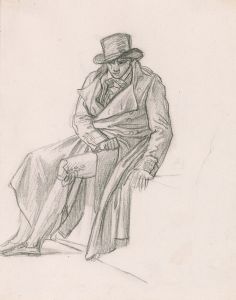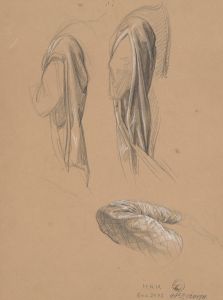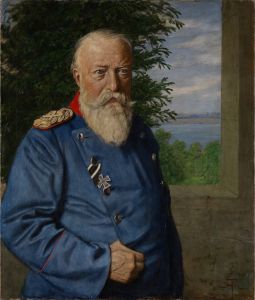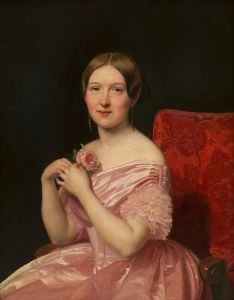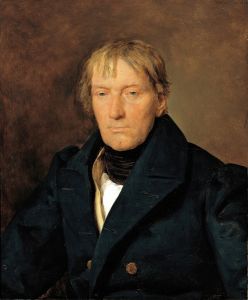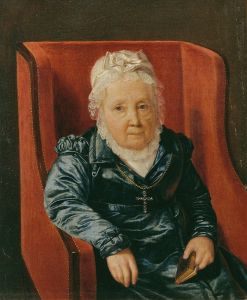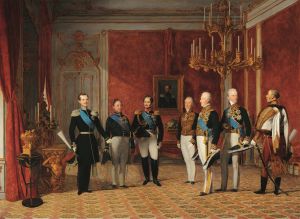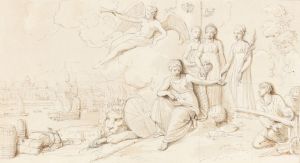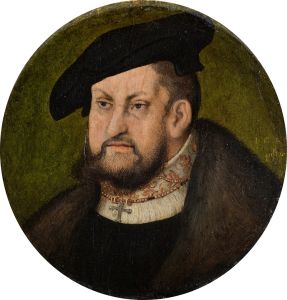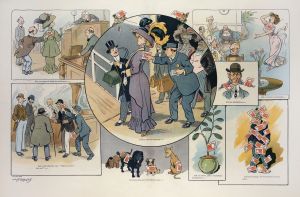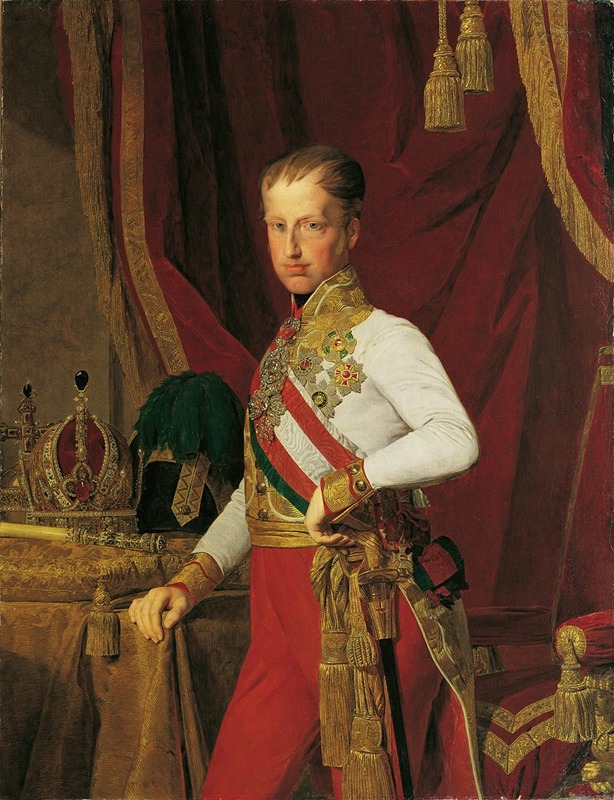
Kaiser Ferdinand I. von Österreich
A hand-painted replica of Ferdinand Georg Waldmüller’s masterpiece Kaiser Ferdinand I. von Österreich, meticulously crafted by professional artists to capture the true essence of the original. Each piece is created with museum-quality canvas and rare mineral pigments, carefully painted by experienced artists with delicate brushstrokes and rich, layered colors to perfectly recreate the texture of the original artwork. Unlike machine-printed reproductions, this hand-painted version brings the painting to life, infused with the artist’s emotions and skill in every stroke. Whether for personal collection or home decoration, it instantly elevates the artistic atmosphere of any space.
Ferdinand Georg Waldmüller, an Austrian painter renowned for his contributions to the Biedermeier period, created the portrait "Kaiser Ferdinand I. von Österreich" in the 19th century. This artwork depicts Emperor Ferdinand I of Austria, who reigned from 1835 to 1848. Known for his meticulous attention to detail and realistic style, Waldmüller was a prominent figure in Austrian art, celebrated for his portraits, landscapes, and genre scenes.
The painting portrays Emperor Ferdinand I in a formal and dignified manner, reflecting his status as a ruler of the Austrian Empire. Waldmüller’s skillful use of light and shadow emphasizes the emperor's facial features and attire, showcasing the artist's mastery of realism. The emperor is depicted wearing traditional imperial regalia, which includes elaborate clothing and possibly insignia that symbolize his authority and position. The background of the painting is understated, ensuring that the focus remains on the subject.
Ferdinand I, also known as Ferdinand the Benign, was the eldest son of Emperor Francis II (later Francis I of Austria) and Maria Theresa of Naples and Sicily. Despite his physical and mental health challenges, Ferdinand ascended to the throne following his father's death. His reign was marked by significant political and social changes, including the Revolutions of 1848, which ultimately led to his abdication in favor of his nephew, Franz Joseph I.
Waldmüller’s portrait of Ferdinand I is an example of the artist's ability to capture not only the physical likeness of his subjects but also their character and status. The painting serves as a historical document, offering insight into the representation of monarchy and power during the Biedermeier period. Waldmüller’s works are often praised for their technical precision and emotional depth, and this portrait is no exception.
Today, Ferdinand Georg Waldmüller is regarded as one of Austria's most important 19th-century painters. His works are held in high esteem and can be found in various museums and collections. The exact location of "Kaiser Ferdinand I. von Österreich" may vary, as artworks of this nature are sometimes part of rotating exhibitions or private collections.





